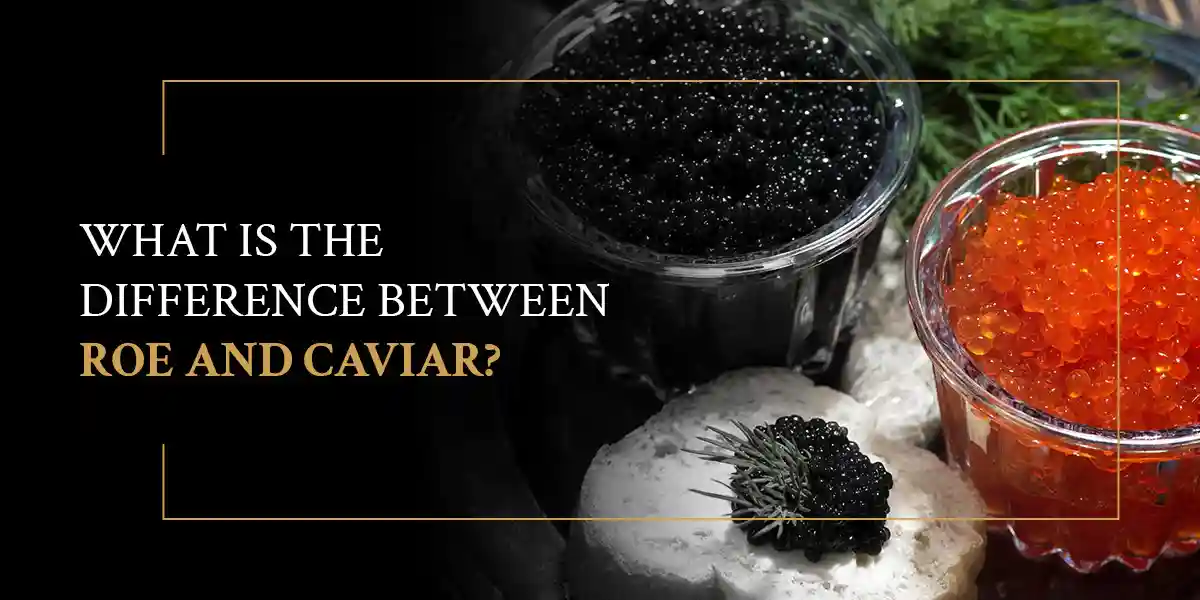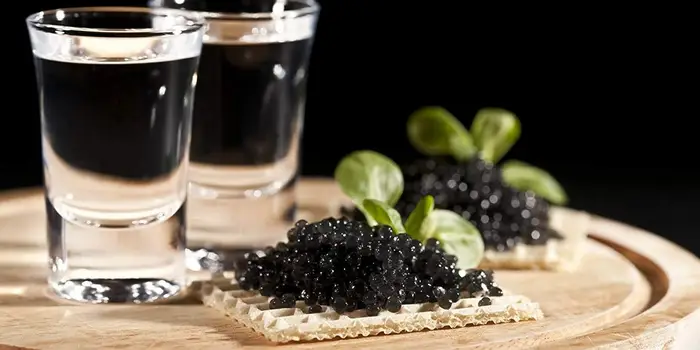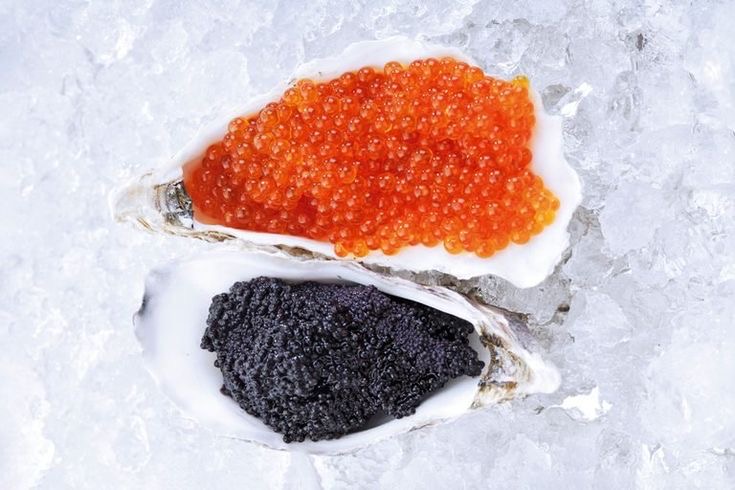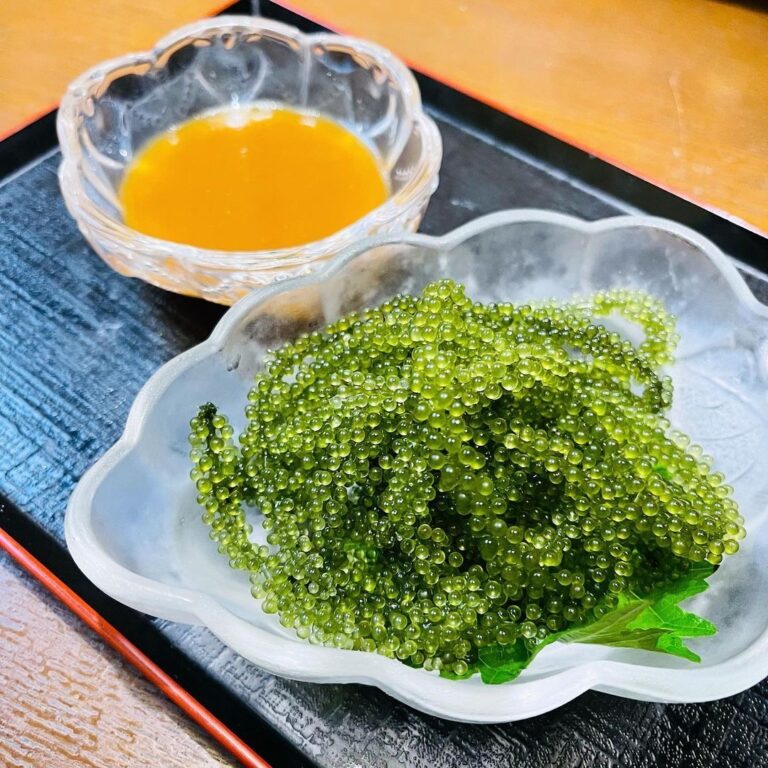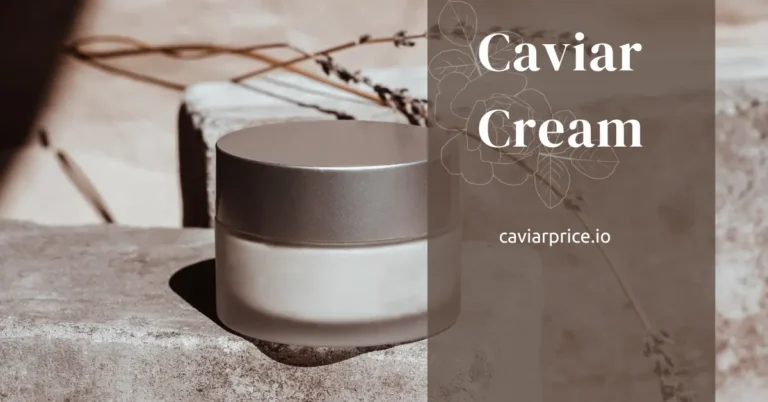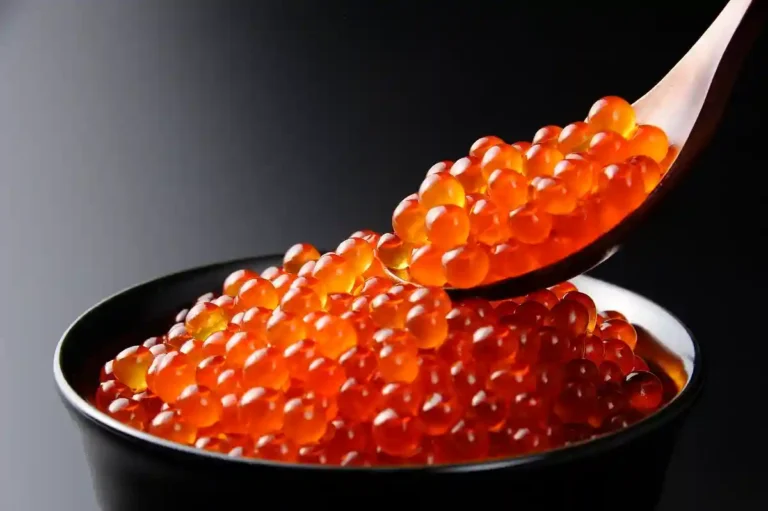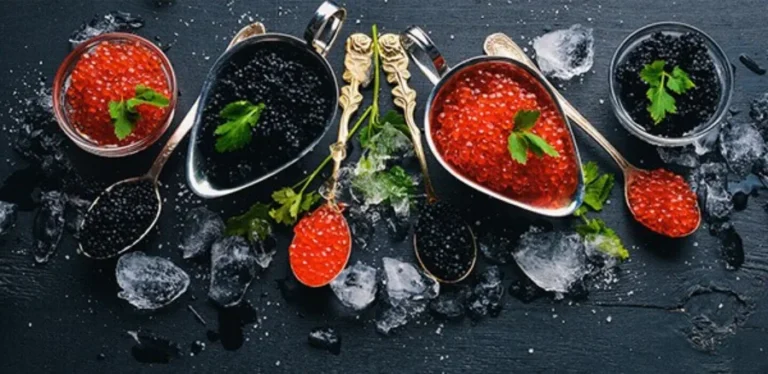Unravelling the Mystery: Is Caviar Fish Eggs, or a Unique Intersection of Caviar and Fish Roe
The Essence of Caviar: More than Just Fish Eggs
Is Caviar Fish Eggs? Caviar is often heralded as the epitome of luxury, a delicacy known for its rich texture and nuanced flavours. Originating from the delicate eggs of the sturgeon fish, a member of the Acipenseridae family, true caviar has a distinct identity in the culinary world. The process of harvesting and preparing caviar is a meticulous art, contributing to its exclusivity and allure.
While caviar comes exclusively from sturgeon, not all fish eggs earn the prestigious title of caviar. The term “roe” refers to the eggs from any fish species, encompassing a variety of fish such as salmon, trout, and flying fish. Whether salt-cured or fresh, roe represents the broader category of fish eggs, with caviar being its most distinguished member.
Diving into Definitions: Understanding Roe and Caviar
Roe and caviar, while often used interchangeably, possess distinct differences. Roe is a common term that refers to fish eggs in general and is commonly used to describe the eggs of a variety of fish such as salmon and trout. On the other hand, caviar is a type of roe, specifically the salt-cured and unfertilized eggs from the sturgeon fish.

This distinction is pivotal, as caviar comes exclusively from the sturgeon family, with species such as beluga sturgeon, white sturgeon, and sevruga being prime producers of this delicacy. Caviar substitutes, often made from different types of fish roe like salmon roe (red caviar) and trout roe, aim to replicate the texture of caviar but offer unique taste profiles.
The Gourmet’s Guide: Varieties of Caviar and Fish Roe
Caviar’s exclusivity is further emphasized by the different types available, each offering a unique flavor and texture. Beluga caviar from the Caspian Sea is renowned for its large, delicate eggs and buttery flavor. Ossetra and Sevruga caviars, also from the Caspian, offer varied textures and flavors, making them highly sought after.
On the other hand, the world of fish roe is vast and diverse, with each type of fish contributing its unique characteristics. Salmon roe, known for its vibrant color and poppy texture, and trout roe, with its subtle and nuanced flavor, are popular choices. Flying fish roe, often seen in sushi, brings a different texture and flavor to the table, highlighting the variety within fish roe.
Savoring the Flavor: The Taste Profile of Caviar and Roe
The taste of caviar is often described as rich and complex, with a subtle, nutty flavor that is both luxurious and satisfying. The texture of caviar, whether it be from Beluga, Ossetra, or Sevruga, is equally important, with each variety offering a unique mouthfeel.
Comparatively, fish roe like salmon and trout roe offer diverse flavors, ranging from bold and briny to sweet and subtle. The texture of these eggs, whether they are still considered roe or salt-cured to mimic caviar, is equally varied, offering a culinary adventure for the palate.
Price of sturgeon Korean Caviar
The exclusivity and labor-intensive harvesting process make caviar an expensive delicacy. Beluga caviar, one of the most sought-after varieties, can fetch a high price, especially if sourced from the Caspian Sea. American caviar and other varieties like Ossetra and Sevruga also command premium prices, reflecting their quality and scarcity.
Different types of fish roe, like salmon and trout, are generally more accessible and affordable, making them a popular choice for those looking to experience the texture and flavor of fish eggs without the hefty price tag. However, regardless of the type, fresh caviar and roe should be handled with care to preserve their delicate nature.
Decoding the Difference: Caviar vs Fish Roe
One of the key differences between fish roe and caviar is the fish it comes from. True caviar is produced solely by the sturgeon fish, while roe can come from a variety of fish families, including salmon and trout. The texture and flavor of caviar are distinctive, with the salt-curing process enhancing its luxurious taste.
Furthermore, caviar is often served in a specific manner to preserve its integrity. The use of non-metallic utensils and serving dishes is common to prevent any alteration in flavor. In contrast, fish roe is more versatile and can be found in various dishes, from sushi to gourmet appetizers, showcasing its adaptability in the culinary world.
Culinary Creations: Incorporating Caviar and Roe in Cuisine

Chefs around the world have been incorporating caviar and fish roe into their culinary creations, highlighting their unique textures and flavors. Caviar, with its rich and subtle taste, is often served on blinis or crackers, allowing its flavor to shine. Its delicate nature requires careful handling, making it a prized ingredient in haute cuisine.
Fish roe, with its variety and versatility, is a staple in many dishes. From the poppy texture of salmon roe in sushi to the subtle flavor of trout roe in pasta, fish roe adds a touch of luxury and flavor to any dish. Whether salt-cured or fresh, caviar and roe bring a unique gastronomic experience to the table.
Sustainability and Sourcing: The Ethics of Caviar Production
The production of caviar has raised concerns regarding sustainability and ethical sourcing. The sturgeon fish, particularly species like the beluga sturgeon, are endangered, and overfishing has further reduced their populations. Regulations and initiatives have been implemented to protect these species and ensure the responsible harvesting of sturgeon eggs.

Caviar substitutes and farmed sturgeon caviar have emerged as sustainable alternatives, offering similar textures and flavors while reducing the pressure on wild sturgeon populations. Consumers looking for ethical options can explore these varieties, ensuring they enjoy this delicacy without contributing to environmental degradation.
Consumer’s Corner: Buying and Storing Caviar and Roe
When purchasing caviar or fish roe, it is essential to consider the source, freshness, and type. Authentic caviar, whether it be beluga, ossetra, or sevruga, should be sourced responsibly, with farmed options available for those seeking sustainable alternatives.
Once acquired, caviar and roe should be stored carefully to preserve their quality. Refrigeration is crucial, and the use of ice packs during transportation can help maintain the optimal temperature. When serving, non-metallic utensils should be used to prevent any alteration in flavour.
Final Thoughts: Is Caviar Fish Eggs
Caviar and roe represent the luxury and diversity of the culinary world. From the exclusive beluga caviar to the versatile salmon roe, these delicate eggs offer a world of flavors and textures. By understanding the differences between fish roe and caviar, appreciating their unique characteristics, and considering sustainability, we can continue to enjoy this delicacy for generations to come.

